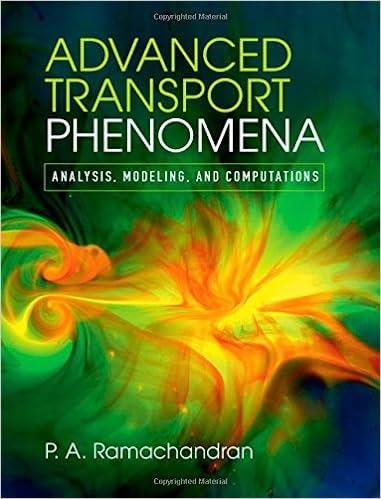Consider the flow past a flat plate. Here we examine the effect of a superimposed velocity (v_{y
Question:
Consider the flow past a flat plate. Here we examine the effect of a superimposed velocity \(v_{y 0}\) at the plate surface. This can be done by the integral method with only minor changes in the equations. Verify that the velocity in the \(y\)-direction is now given by
\[\begin{equation*}v_{y \delta}=v_{y 0}-\int_{0}^{\delta}\left(\frac{\partial v_{x}}{\partial x}\right) d y \tag{15.88}\end{equation*}\]
This adds an extra term \(v_{y 0} v_{\infty}\) to the integral form of the \(x\)-momentum balance. The resulting equation can be derived as
\[\begin{equation*}\frac{d}{d x}\left(\int_{0}^{\delta}\left(v_{x}^{2}-v_{\infty} v_{x}\right) d y\right)+v_{y 0} v_{\infty}=-\frac{\tau_{\mathrm{w}}}{ho} \tag{15.89}\end{equation*}\]
Apply a cubic profile and integrate the above equation to get an (implicit) relation for the boundary-layer thickness. Derive this equation and discuss how the boundary-layer thickness changes with the blowing or suction velocity \(v_{0}\).
Step by Step Answer:

Advanced Transport Phenomena Analysis Modeling And Computations
ISBN: 9780521762618
1st Edition
Authors: P. A. Ramachandran





